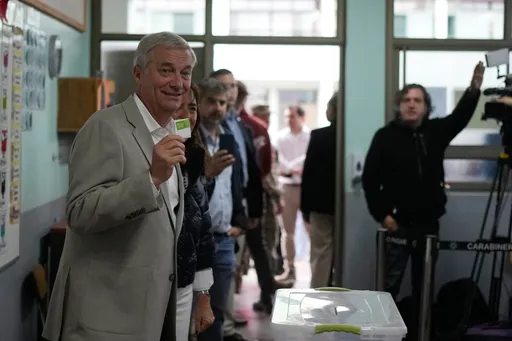In a remarkable medical achievement, doctors in London have restored vision to children with Leber congenital amaurosis (LCA), a rare genetic condition that severely impairs sight from birth.
The groundbreaking procedure, which takes around an hour, involves injecting healthy copies of the affected AIPL1 gene into the back of one eye to “kick-start” sensitivity.
It works on repairing the faulty gene responsible for the condition. This gene is important for the function of photoreceptors, light-sensing cells in the retina that convert light into electrical signals that the brain interprets as vision.
By replacing the defective gene, the therapy restores light-sensing cells, allowing the children to see for the first time.
Developed by UCL (University College of London) with support from MeiraGTx and licensed under special regulations, the treatment offers hope for both rare and more common genetic blindness.
Researchers say this approach is the first of its kind and could pave the way for treating other genetic eye disorders.
The results have been astonishing.
“Typically, they can only distinguish light and dark, and that little sight they will lose within the first few years of life,” Professor James Bainbridge, a consultant retinal surgeon at Moorfields Eye Hospital and professor of retinal studies at the UCL Institute of Ophthalmology, told PA news agency.
The medical team reported that all children involved in the trial experienced significant improvements in vision, with some now able to read and write.
“What we found is that by providing the gene to their eyes that’s otherwise lacking, we can substantially improve their sight, and this appears to have a positive impact on their general development.”
The procedures were conducted at Great Ormond Street Hospital in London, where surgeons performed minimally invasive keyhole surgery on patients aged one to two years old.
“The effect of that is to kick-start, if you like, the sensitivity of the retina,” Prof Bainbridge added.
“The expectation is that there might be some benefit to their sight within a few weeks or months, and we were delighted to see that was indeed the case.”
Families overjoyed
In 2020, specialists from Moorfields Eye Hospital and the UCL Institute of Ophthalmology selected four children with LCA for the gene therapy trial.
During the trial, four children from the US, Türkiye, and Tunisia were treated with follow-ups over four years, showing sustained improvements in vision and overall development.
The breakthrough has brought unimaginable joy to families who had been told their children’s blindness was irreversible.
Parents described their children gaining confidence, mobility, and independence. They shared emotional stories of their children seeing light, colours, and faces for the first time.
One of the parents, DJ and Brendan, travelled from Connecticut to receive the treatment in September 2020.
Their six-year-old son, Jace, who was just two when he underwent the treatment, can now pick up small objects from the floor and recognise toys from a distance.
They are now impressed by the results, describing them as “pretty amazing”, expressing gratitude for the opportunity.
“Pre-surgery, at around two years old, you could have held up any object, even a couple of inches away from Jace’s face, and he wouldn’t be able to track it,” said his mother, DJ. “And now we get calls and notes home from school that he’s stealing phones out of teachers’ back pockets, which is hysterical to us.”
Since the initial four children were treated, a further seven patients have undergone the therapy at Evelina London Children’s Hospital, with specialists from St Thomas’ Hospital, Great Ormond Street, and Moorfields.
The research team is now working to expand the study to include more patients, hoping to make the treatment widely available.
“The hope is this treatment will become available to children in the UK and elsewhere as a licensed treatment,” said Prof Bainbridge.
Jace’s mother DJ said: “Sleep can be difficult for children with sight loss, but he falls asleep much more easily now, making bedtimes an enjoyable experience.”
























